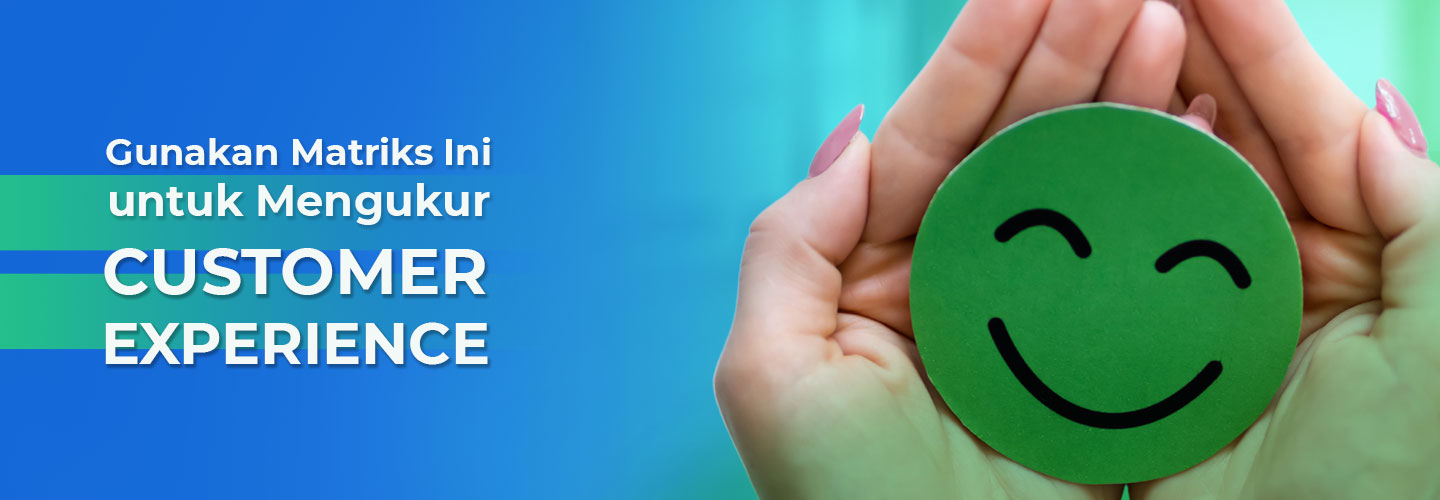Metrics Used to Measure Customer Experience

Success in a company is now not about sales. To increase sales, you don't just need a sales team. The involvement of the entire team is necessary so that the products or services you offer meet customer needs.
Nowadays, customers also think about the shopping experience (customer experience/CW) before choosing a product and even post-purchase service (aftersales). To measure customer experience, there are various metrics designed to provide insight into product satisfaction.
What is customer experience?
Customer experience (CX) is the overall interaction and perception felt by customers when they interact with a company or brand.
CX includes all customer touchpoints such as the first visit, purchase of a product or service, and every interaction thereafter. These interactions include online and offline customer experiences, including interactions with websites, customer service, purchasing processes, product delivery, and more.
Metrics to measure customer experience
To measure customer experience, you can use various metrics or performance indicators.
These indicators help you understand the extent to which customers are satisfied, engaged and loyal to the business. The following are some metrics that are commonly used to measure customer experience.
Net Promoter Score (NPS)
NPS is a metric that measures the extent to which customers would recommend your product or service to others.
Customers are asked questions, such as “on a scale of 0-10, how likely are you to recommend us to a friend or colleague?”
Based on their answers, customers are categorized as Promoters (9-10), Passives (7-8), or Detractors (0-6).
Why should you use NPS? There are three reasons, fast, simple and easy for both customers and companies.
Open-ended feedback allows you to dive deeper and see the big picture. NPS is also used to measure word of mouth marketing strategies.
Customer Satisfaction Score (CSAT)
CSAT is a metric that measures customer satisfaction with your product or service. Usually, customers are asked to rate them on a certain scale, for example from 1 to 5 or 1 to 7, to rate the extent to which they are satisfied.
The CSAT method for customer experience metrics is simple and efficient to apply. Just like NPS, it is usually very simple and quick for customers to answer.
This is often asked from customers after a transaction to evaluate the efficiency of the customer service department. CSAT is a great way to find out what your customers think about you today.
Customer Effort Score (CES)
CES measures how easy or difficult customers find interacting with your company. They can be asked to provide an assessment of the level of difficulty in completing a task or achieving their goals.
The CES customer experiences metric typically asks “How easy was it to solve your problem today?” then assessed with a 5 or 7 point scale system.
CES is different from NPS or CSAT because to understand it, you need to follow the average scores and score distribution.
Analyzing these scores can help you identify which customers experience easy service. More importantly, this method can find customers who are experiencing difficulties during the process.
Churn Rate
Churn rate indicator is the percentage of customers who stop using your product or service within a certain time period. A high churn rate can be a sign that customers are dissatisfied with their experience.
Take for example, you have signed 1000 long-term contracts worth 1 billion at the beginning of the year, but now only 800 customers continue to use your services.
Keeping up with customer churn rates is important because in general, retaining existing customers is much cheaper than acquiring new ones.
Retention Rate
Retention rate is the inverse of churn rate. It measures the percentage of customers who continue to use your product or service over a certain period of time. A high retention rate indicates that customers are satisfied and likely to remain loyal.
Customer Lifetime Value (CLV)
CLV is an estimate of the economic value of one customer during the period of cooperation with your company. The higher the CLV, the better the customer experience, as they are more likely to make repeat purchases.
Customer Feedback
In addition to numerical metrics, direct feedback from customers is also important. Listening to customer complaints, suggestions and comments can provide valuable insight into how to improve their experience.
Social Media Sentiment Analysis
Conducting a sentiment analysis of what customers are saying on social media about your company or brand can provide insight into their perceptions.
Customer Journey Mapping
Identifying the customer journey from the beginning to the end of an interaction with your company can help you find weak points in the customer experience.
Service Level Agreements (SLAs)
For service-based businesses, measuring the extent to which the company meets the SLAs agreed with customers can be an important indicator in measuring customer satisfaction.
These metrics can be used together or separately, depending on your type of business and your goals in measuring and improving customer experience. A combination of multiple metrics will provide a more comprehensive view of your services.